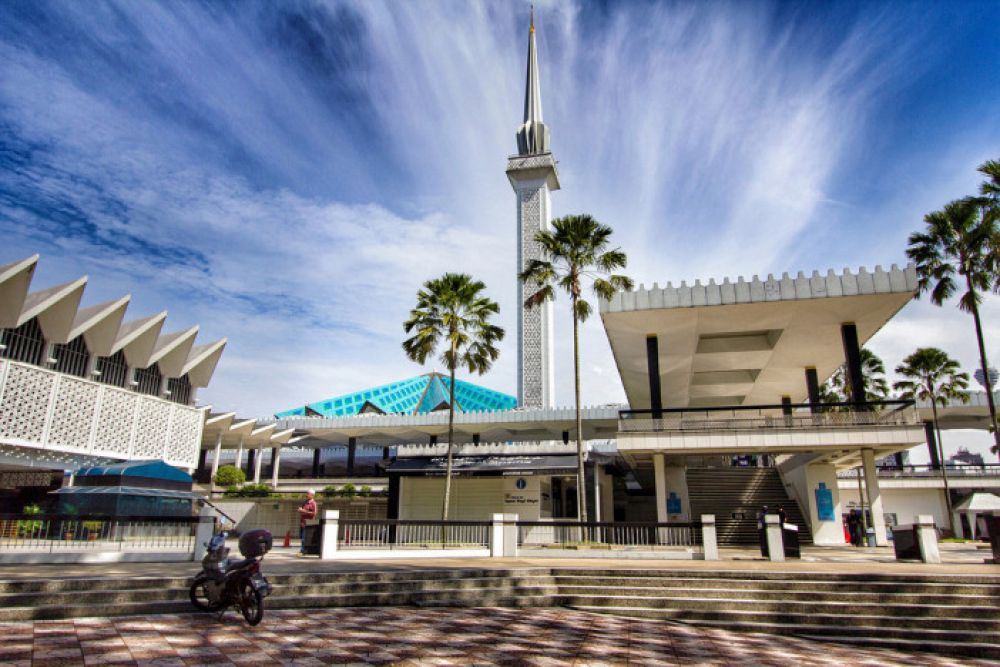

The National Mosque of Malaysia, also known as Masjid Negara, holds a pivotal place in the heart of Kuala Lumpur and in the history of Malaysian tourism. Completed in 1965, this national symbol of Islam was officially opened on August 27, 1965, by the third Yang di-Pertuan Agong (King) of Malaysia, Tuanku Syed Putra Al-Haj Ibni Almarhum Syed Hassan Jamalullail. The mosque's construction coincided with Malaysia's first decade of independence and reflects the ambitions and aspirations of the newly sovereign nation.
The mosque's design breaks away from traditional Islamic architectural elements, by incorporating modernist, brutalist and liner expressions – a testament to Malaysia's modern outlook at the time. Notable for its grand dome which is covered in a striking green and blue tile mosaic, the mosque has a capacity of 15,000 people, making it one of the largest in Southeast Asia. Its 73-meter-high minaret serves as a cultural beacon beckoning visitors.
Tourism at the National Mosque began to flourish as air travel became more accessible in the 1970s and 1980s. As a result, the mosque became not just a place of worship but also a must-visit destination for tourists in Malaysia. It is strategically located near the Kuala Lumpur railway station and is part of the integrated tour of the city's notable landmarks. The mosque's open-door policy encourages visitors from all walks of life to explore the grounds, provided they adhere to respectful dress codes and visit outside of prayer times.
Masjid Negara is more than just a tourist spot; it's a center for Islamic culture and learning. It has hosted numerous international religious conferences and seminars, further enhancing its global Islamic profile. Its library is rich in Islamic literature and serves both tourists and scholars alike.
In the latest tourism trends, experiences that allow for a deeper cultural and spiritual understanding are in high demand. Sustainable tourism and ethical travel considerations have also become front and center. The National Mosque caters to these trends by providing a peaceful and reflective experience, as well as free guided tours that educate visitors on Islamic art, culture, and the architectural significance of the mosque.
In response to the global pandemic, the National Mosque has implemented safety measures to protect visitors and worshippers alike, adapting to the new normal without compromising the serenity and spiritual ambiance that define it.
When visiting the National Mosque of Malaysia, tourists are encouraged to dress modestly, with robes and headscarves provided at the entrance for those in need. Photography is allowed within the premises, but visitors must remain silent and respectful especially during prayer times. The mosque is surrounded by beautiful gardens and reflecting pools, making it a picturesque site for a thoughtful stroll.
The National Mosque remains a cornerstone of Malaysia’s religious architecture and a testament to the harmonious balance between tradition and modernity. It stands not only as a symbol of national pride but also as a beacon for tourists seeking a meaningful and enlightening experience, which continues to be an integral aspect of tourism in Malaysia.